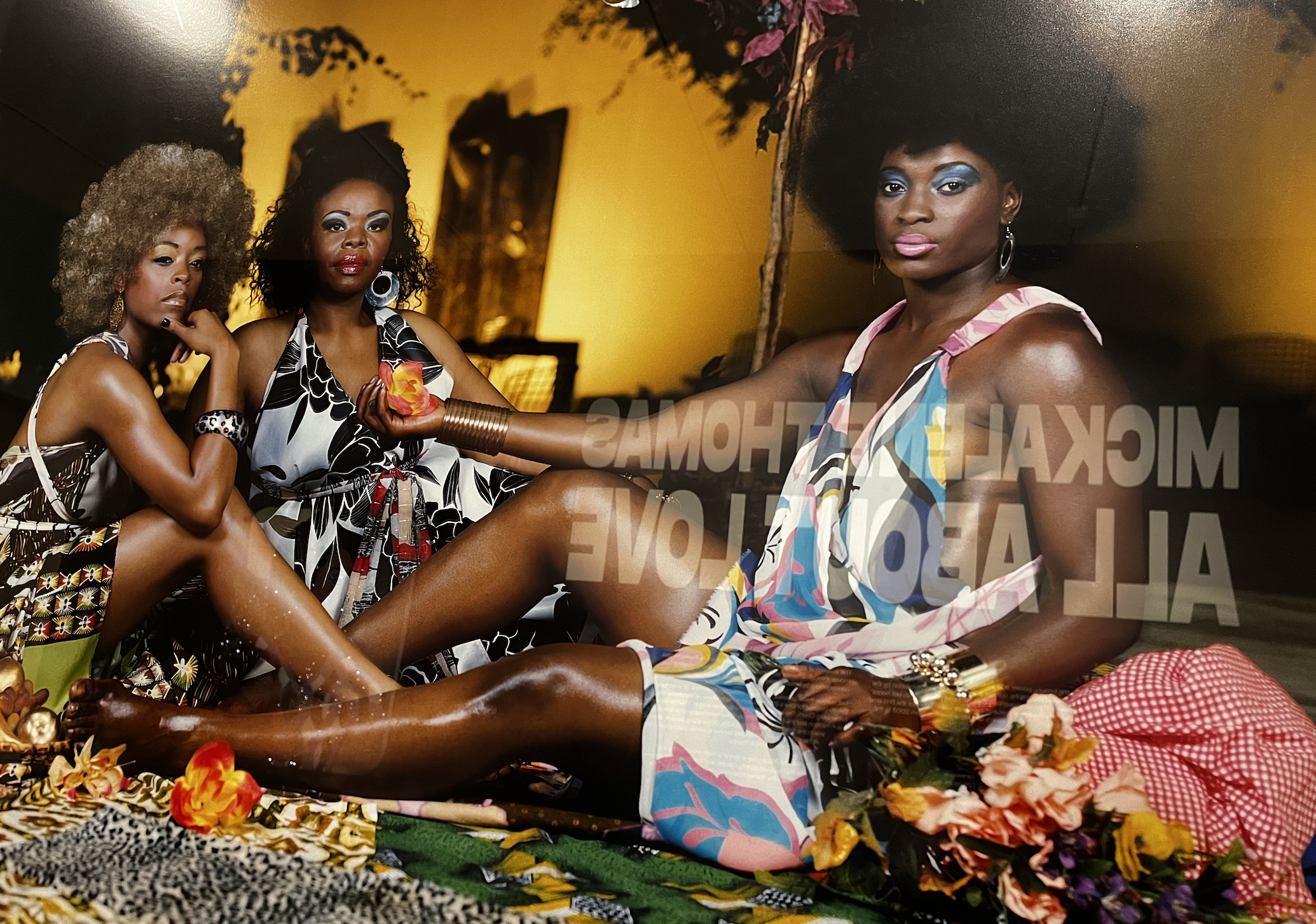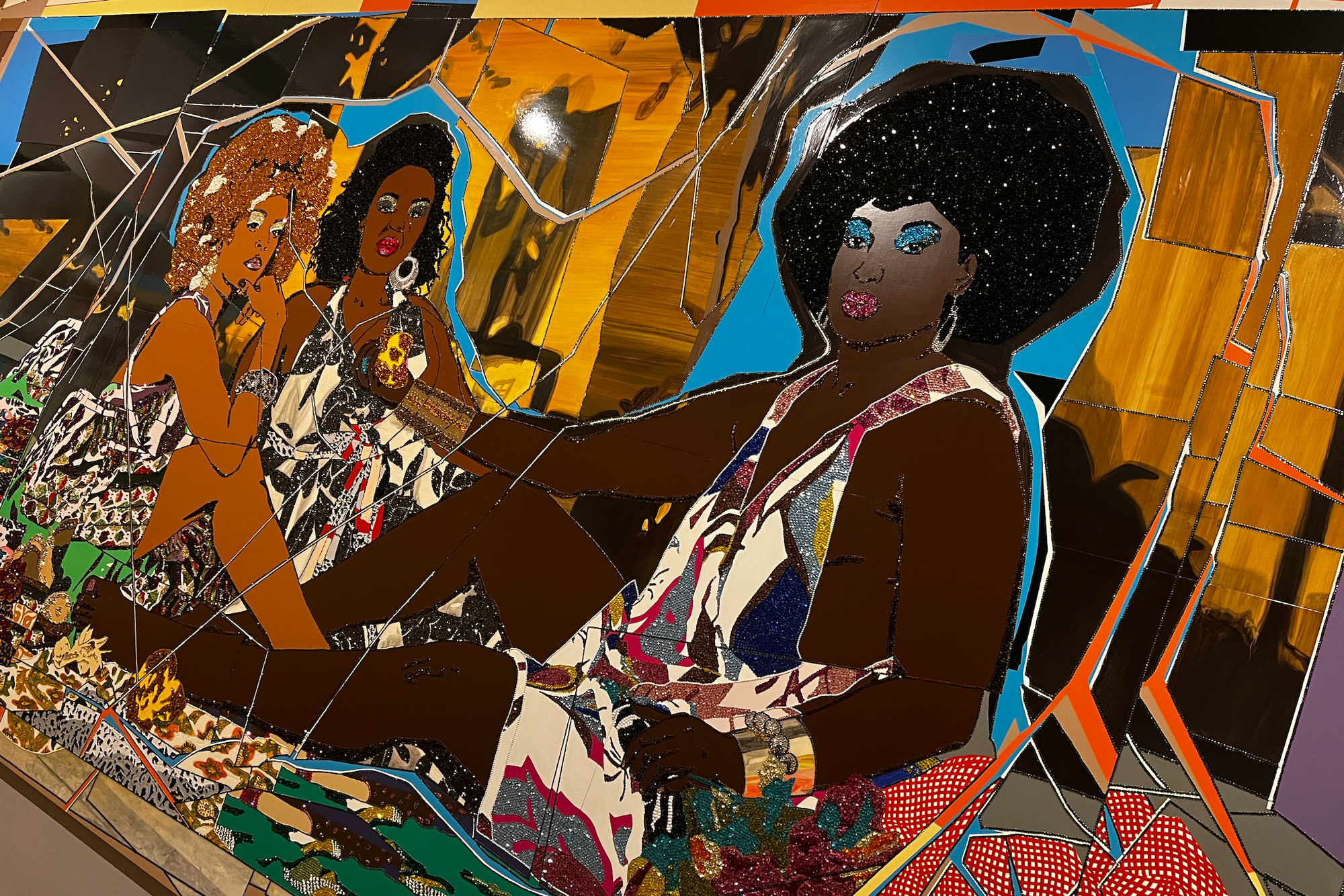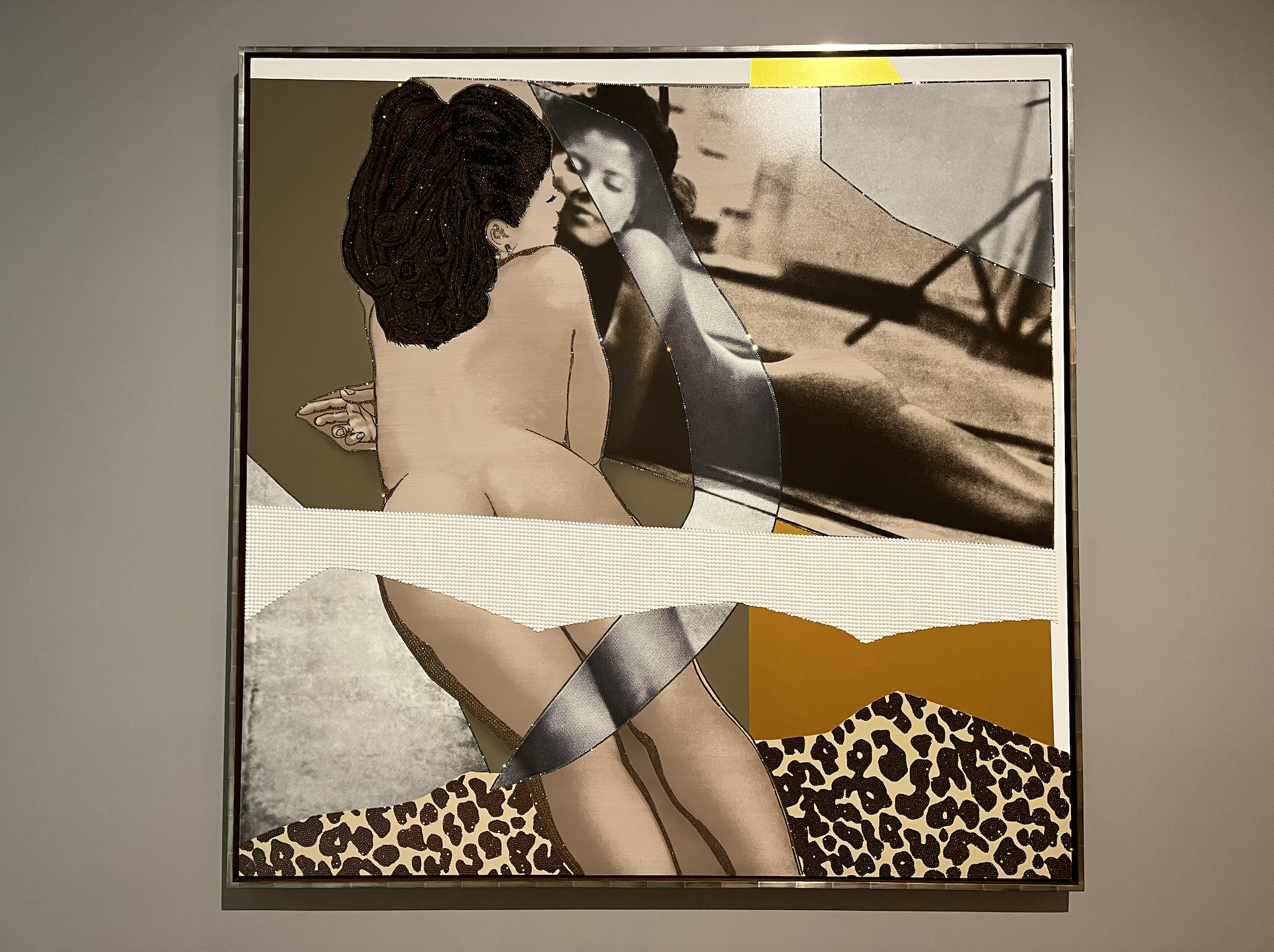Mickalene Thomas: All About Love
Barnes Museum
2025 Benjamin Franklin Pkwy.
Philadelphia
Nov. 8, 2024
Imagine it’s 1972. You’re opening up Playboy, arriving upon an image of a glammed-up, stripped-down girl sprawled naked in front of a mirror. Your eyes travel down her body, looking for the good stuff, when you realize — oh no! — her ass has been whited-out.
In Mickalene Thomas’ “Nus Exotique #5,” a collaged artwork inspired by French Black erotica from the 1950s, the subject is self-love — not sex. The image I’m talking about isn’t in Playboy. It’s hanging inside the Barnes Museum as part of an international exhibit of Mickalene Thomas’ expansive body of work. Thomas’ nude-heavy portraits are far more than an attempt to piss off horny men; instead, they function as a way to subvert their gaze altogether.
The show at the Barnes is named “All About Love,” after author Bell Hooks’ book by the same name. Copies of the book and other literature written by Black, feminist thinkers are scattered throughout the exhibit. Though Thomas is a contemporary artist, her work pulls heavily from the Black Power movement of the sixties and seventies. The rising recognition of Black artists in popular culture functions as the aesthetic turning point in Thomas’ visual understanding of the world — it’s a tool to prove that Black and queer creators have always made up their own lineage and belong in a league of their own.
“Nus Exotique #5” and its sepia color scheme is relatively subdued compared to the other artworks on display.
The majority of Thomas’ photos, paintings and multimedia portraits are sprawling and vibrant depictions of her muses, all of whom are Black women. The opening work is a magnanimous self-portrait of Thomas herself, titled “Afro Goddess Looking Forward,” featuring a rhinestone-studded vision of the artist, drenched in loose silks and manspread on a couch of bold florals. Most importantly, past the acrylics and sequins is a set of eyes; a photograph of Thomas’ brows is pasted on top of her painted face.
In virtually every image included in the show, Thomas’ subjects stare straight into the camera. In a twist on Édouard Manet’s 1863 painting, “Le Déjeuner sur l’herbe,” which focuses on a nude woman grinning at the viewer while two fully clothed men are locked in conversation with one another, Thomas paints three Black women outwardly observing the world while dressed up in self-posession. They appear as gods, larger than life with their natural hair, well-oiled skin and studded hoops.


The subjects are leveling with their audience: They know what’s up, and it’s them. The viewer can either look up to them or look away. Either way, the muses will still be there, basking on the museum walls in all their glory.
“Nus Exotique” is a more humble take on Thomas’ subversion of subject. It splits a woman into two selves: her photographed reflection and her illustrated representation. Instead of looking at or above the viewer, the incomplete character — modeled on and named after an exclusively Black erotic magazine published in France during the mid-2oth century — is satisfied with these two sides of herself.
The image stands out because of the direction of the subject’s stare. It’s a visual description of how even as a body is presented publicly for others’ pleasure, the soul inside of it is free to see themselves however they choose. Unlike Thomas’ other nudes, which highlight the beauty of real bodies through small details like sagging breasts outlined with sequins, the inspired erotica uses collage as a tool for concealment. Gridded paper and cheetah-patterned print covers the woman’s hour glass so that we see only infatuation as shown through the smile exchanged between her two selves.
The common thread of Thomas’ work, at least in this exhibit, seems to be a devotion to doing-it-yourself. All the art is mixed-media. It employs a heavy focus on collage, demonstrating the power of people, specifically queer, Black women, who have chosen to fight for their own representation and rights and reclaimed their beauty even as its been distorted, exploited and appropriated in turn.
We all have to deal with the loaded lens of patriarchy as we navigate modern media. But Thomas reminds us that in the scrap pile of representation are shards of reality. It’s up to us to collage together the truths of our existence — and show everyone else what we’re made of.
All About Love is showing through Jan. 12. Find out more and buy tickets here.






